Lofn ‘Matchmaker’ – Norse Goddess Of Forbidden Marriages Of People Who Wish To Be Loved And Search For Partners
A. Sutherland - AncientPages.com - In the Prose Edda book "Gylfaginning," an Icelandic historian, poet, and politician, Snorri Sturluson (1179-1241), described the goddess Lofn, who "let people live together, women and men, even if previously it was for them forbidden or considered illegal" to be together.
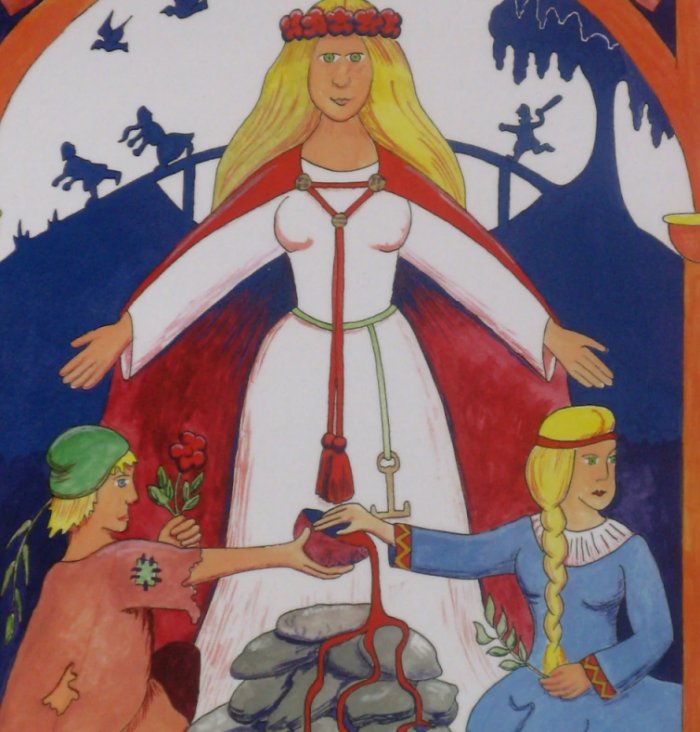 Goddess Lofn who arranges forbidden marriages in Norse mythology. source
Goddess Lofn who arranges forbidden marriages in Norse mythology. source
In Norse mythology, Lofn is a minor deity. Although not significant in the pantheon, she was essential to people who wished to be loved and searched for love and partners. Lofn was great support for those who desperately needed her help.
The goddess of passionate love, Lofn (also Lofna), whose name means 'love' or 'praise,' was a female of the Æsir gods. Lofn was one of the Asynjur of the goddess Frigg, Odin's wife and the goddess of love, marriage, and motherhood.
Frigg was the most prominent personality among the holy sisterhood of Asynjur.
Lofn was appreciated for her goodwill and kindness and was "good to pray to" when marriage was controversial. The gentle and gracious and good maiden Lofn had permission from Odin or Frigg to bring together men and women, no matter what difficulties may stand in their way. If there were any apparent obstacles, Lofn had the power to remove them.
The name "love" was associated with Lofn's name, and this name was much loved and respected by men and women who lived on Midgard (or Mannheim), one of the nine worlds of Yggdrasil, the sacred tree of life in Norse mythology.
Men and women who were not allowed to marry each other could rely on the divine Lofn, who in Snorri's catalog in "Gylfaginning" is listed as the eighth of 16 (or 14) Asynjur.
As we mentioned earlier, Lofn was only a minor goddess, but it does not mean she was not of value, especially to ordinary people. In Norse skaldic poetry of the 9th to the 13th century), Lofn's name was mentioned frequently.
According to Snorri, Asynjur represents a court around Frigg.
Then Snorri mentions: Saga, Eir, Fulla, Freja (also called Mardöll, Hörn, Gefn, Syr, and Vanadis), Sjöfn, Lofn, Vår, Vör, Syn, Hlin, Snotra, Gnå, Sol, Bil, Jord, and Rind.
Together with the Æsir gods and Vanir, the Asynjur form a large family in which everyone remains young thanks to the apples of Idun.
Freya belongs to the family of the Vanas, but she is the goddess who participates in most of the myths. Frigg is Odin's wife. Most of the Asynjur are very independent and have farms. However, they are all threatened by the coming disaster that Ragnarök entails.
Frigg is the first; she possesses the lordly dwelling called Fensaler.
Other Asynjur includes Saga ('a seeress'), probably another name for Frigg; Eir, a goddess of medicine and medical care; Gefjon, associated with plowing; Fulla, who carries Frigg's chest, takes care of her shoes and knows her secrets; the goddess Freya ranked with Frigg. Another attendant of Frigg is Sjöfn, who is fond of turning men's and women's hearts to love, and like Lofn, she also cares for marriages and matchmaking, but most probably, this goddess can be the goddess Frigg herself.
Among other Asynjur is the goddess Var, whose duty is to hear the oaths and troths that men and women plight each other. She takes vengeance on those who break their promises.
In Norse mythology, Vör (in Old Norse, possibly "the careful one") is a goddess associated with wisdom. Vör is also attested in the Prose Edda, among Frigg's Asynjur.
Meanwhile, Syn is the deity who guards the hall door and closes it against those who cannot enter. In trials, she is invoked when necessary by the defenders.
The goddess Hlin must guard those men whom Frigg wants to protect from any danger, while Snotra is the one who is wise and courtly. Another attendant is Gna, Frigg's envoy whom Frigg sends on her errands into various worlds. Snorri Sturluson's list also includes Skadi, the wife of Njord.
A few of the Asynjur are well-known in their own right, most of which can be found in various Norse myths.
Updated on March 25, 2023
Written by – A. Sutherland - AncientPages.com Senior Staff Writer
Copyright © AncientPages.com All rights reserved. This material may not be published, broadcast, rewritten or redistributed in whole or part without the express written permission of AncientPages.com
Expand for referencesReferences:
Lindow, John. Norse Mythology
Simek, Rudolf, Dictionary of Northern Mythology
Anderson R. B. Viking Tales of the North
More From Ancient Pages
-
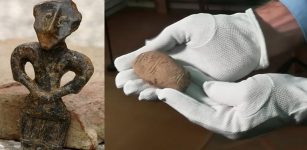 7,000-Year-Old Inscription With Undeciphered Vinca Script – One Of The World’s Earliest Writing Systems Discovered
Archaeology | Feb 17, 2018
7,000-Year-Old Inscription With Undeciphered Vinca Script – One Of The World’s Earliest Writing Systems Discovered
Archaeology | Feb 17, 2018 -
 Mount’s Bay, Lyonesse, Langarroc: Legendary Submerged Lands And Buried Towns Of Cornwall
Featured Stories | Apr 21, 2022
Mount’s Bay, Lyonesse, Langarroc: Legendary Submerged Lands And Buried Towns Of Cornwall
Featured Stories | Apr 21, 2022 -
 Home Of The Gods – The Return Of The Gods – Part 3
Civilizations | Jun 14, 2018
Home Of The Gods – The Return Of The Gods – Part 3
Civilizations | Jun 14, 2018 -
 Is A Viking Settlement And An Even Older Church Hidden Under St. Clement’s Church In Norway?
Archaeology | Apr 13, 2017
Is A Viking Settlement And An Even Older Church Hidden Under St. Clement’s Church In Norway?
Archaeology | Apr 13, 2017 -
 Why Is Rome Called ‘The Eternal City’?
Ancient History Facts | Apr 4, 2018
Why Is Rome Called ‘The Eternal City’?
Ancient History Facts | Apr 4, 2018 -
 Reconstrucion Of The 19-Meter-Long Gjellestad Viking Ship In Progress
News | Oct 9, 2023
Reconstrucion Of The 19-Meter-Long Gjellestad Viking Ship In Progress
News | Oct 9, 2023 -
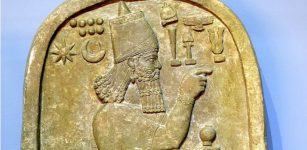 Stele Of Tell al-Rimah And Deeds Of Assyrian King Adad-nirari Against Rebellious Kings
Featured Stories | Feb 22, 2022
Stele Of Tell al-Rimah And Deeds Of Assyrian King Adad-nirari Against Rebellious Kings
Featured Stories | Feb 22, 2022 -
 Pharos Of Alexandria – One Of The First Lighthouses In The Ancient World
Featured Stories | Sep 1, 2015
Pharos Of Alexandria – One Of The First Lighthouses In The Ancient World
Featured Stories | Sep 1, 2015 -
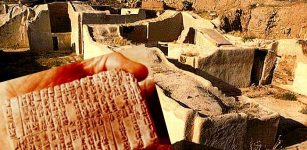 Mysterious Ancient City Of Ebla That Existed Thousand Years Before Biblical Kings David And Solomon
Biblical Mysteries | Aug 14, 2015
Mysterious Ancient City Of Ebla That Existed Thousand Years Before Biblical Kings David And Solomon
Biblical Mysteries | Aug 14, 2015 -
 Encounter With Time Window At The Upper Current River And Curious Glimpses From The Past
Featured Stories | Jul 28, 2018
Encounter With Time Window At The Upper Current River And Curious Glimpses From The Past
Featured Stories | Jul 28, 2018 -
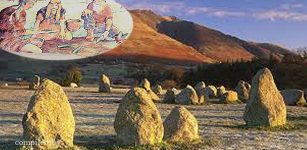 Castlerigg Stone Circle: One Of Britain’s Most Important And Earliest Stone Circles
Featured Stories | Apr 16, 2019
Castlerigg Stone Circle: One Of Britain’s Most Important And Earliest Stone Circles
Featured Stories | Apr 16, 2019 -
 Exploring Future Evolution: How Will Humans Change In The Next 10,000 Years?
Featured Stories | Oct 3, 2022
Exploring Future Evolution: How Will Humans Change In The Next 10,000 Years?
Featured Stories | Oct 3, 2022 -
 Idol Of Pachacamac Inca God Reveals Its Colors
Archaeology | Jan 21, 2020
Idol Of Pachacamac Inca God Reveals Its Colors
Archaeology | Jan 21, 2020 -
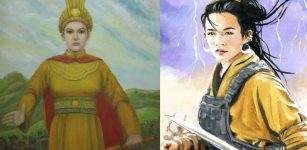 Lady Trieu: Fierce Warrior, Rebel, Freedom Fighter And National Hero In Vietnam
Featured Stories | Feb 26, 2019
Lady Trieu: Fierce Warrior, Rebel, Freedom Fighter And National Hero In Vietnam
Featured Stories | Feb 26, 2019 -
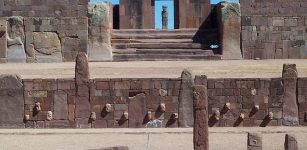 Superfood Of Ancient Andeans Reconstructed – What Helped To Fuel The Tiwanaku Civilization 2,500 Years?
Archaeology | Nov 30, 2021
Superfood Of Ancient Andeans Reconstructed – What Helped To Fuel The Tiwanaku Civilization 2,500 Years?
Archaeology | Nov 30, 2021 -
 On This Day In History: Dramatic Battle Of Öland – On June 1, 1676
News | Jun 1, 2016
On This Day In History: Dramatic Battle Of Öland – On June 1, 1676
News | Jun 1, 2016 -
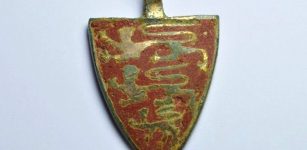 Priceless 800-Year-Old Treasure Featuring Three Golden Lions Unearthed
Archaeology | Aug 5, 2022
Priceless 800-Year-Old Treasure Featuring Three Golden Lions Unearthed
Archaeology | Aug 5, 2022 -
 Spectacular Find: Lost Temple Of Goddess Artemis Has Been Found On Greek Island Of Euboea
Archaeology | Sep 22, 2017
Spectacular Find: Lost Temple Of Goddess Artemis Has Been Found On Greek Island Of Euboea
Archaeology | Sep 22, 2017 -
 Amanitore – Nubian Warrior Queen And Her Pyramids
Historical Figures | Aug 13, 2018
Amanitore – Nubian Warrior Queen And Her Pyramids
Historical Figures | Aug 13, 2018 -
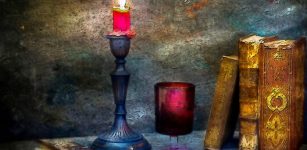 Lost Q Source Remains An Unsolved Biblical Mystery
Biblical Mysteries | May 7, 2017
Lost Q Source Remains An Unsolved Biblical Mystery
Biblical Mysteries | May 7, 2017
